
Skyrim Magic: Arcane and Graphical
Skyrim’s magic system is familiar – the five schools are present (Destruction, Conjuration, Alteration, Illusion and Restoration) - but now you can dual-wield spells. You can assign Heal to your left hand and Sparks to your right, for example. Equally, you can have Sparks crackling away in your left hand and a one-handed weapon in your right. If you’ve got two spells on the go, clicking the left mouse button will cast the right-hand spell and clicking the right mouse button will cast the left-hand spell.And yes, we did get that the right way round. All Skyrim characters are right-handed, and the main weapon is activated with the main mouse button (left, unless you’ve changed it). Dual-wielding spells is therefore always a little odd, as the mouse button doesn’t really correspond with the hand. Some perks will also let you dual-wield the same spell (have it in both hands) for extra effect.
The end result is that wizards are a bit more fun than previously, because there’s no need to shuffle through inventories or mess around with hotkeys to change from one spell to another. The favourites system also works well for mages. In fact, despite us playing as an argonian tank character, we had great fun shooting off fireballs and electricity every so often.
As well as new magic, you can also gawp at the graphics. The new Creative Engine (an evolution of the Gamebryo engine of Oblivion and Fallout 3) makes Skyrim visually spectacular. Whether it’s the way that spires disappear into mist and fog at their summit, or the way that Arctic winds blow up from outcrops of mountains, we often just stopped to gaze around.
There’s a palpable sense of foreboding when travelling through wild areas at night, while the shortened view distance in snowstorms ratchets up the tension to such a point that we actually flinched as a bunny hopped out of the blizzard toward us. Each area also has its own look and feel (and ingredients to gather). As a side point, it’s refreshing that not every animal is hostile – even wolves will sometimes just saunter past. Not everyone on the road is a bandit, either.
Dammit, we’ve got distracted again. Focus! There are some imposing structures and buildings to see too, with some epic locations drenched with character and history. The toolset for dungeons and buildings shows signs of limitation, though – some inns have identical layouts, as if built by Inns R Us, and we started to recognise common elements of dungeons fairly quickly. However, there’s far more variety than there is in Oblivion.
As with previous Elder Scrolls games, the pool of accents and voices isn’t huge, but it offered enough variety to keep us happy. With such a massive, free-form world, plus huge buildings and a load of dialogue, it’s incredible that Skyrim only takes up around 6GB of disk space – that’s the same space as the original Left 4 Dead and over half as much as the dull LA Noire. However, the scenery is still quite blocky and angular – some tessellation wouldn’t go a miss – and the same checkerboard shadow maps of Oblivion fame are still present.
More to the point, our 2.66GHz Core i7-920 only became a little chuggy when there was lots of moving scenery). The game threaded across the four physical cores of the CPU, avoiding the logical ones – we’re unsure whether the game only had four threads or just hates Hyper-Threading. Our slightly overclocked AMD Radeon HD 6950 2GB was also able to manage frame rates between 30-60fps at maximum prettiness at 1,920 x 1,080 (with 4x AA, 16x AF).
You can, of course, dial down the texture quality and fade distance. The internal shot shows the effects of the latter well, as the room looks so barren beyond a yard from the camera that even the objects against the wall have disappeared. This will appear ex nihilo as you walk towards it, as will huge structures such as towers and ramparts; low fade distances make the game look silly and annoying to play.

MSI MPG Velox 100R Chassis Review
October 14 2021 | 15:04

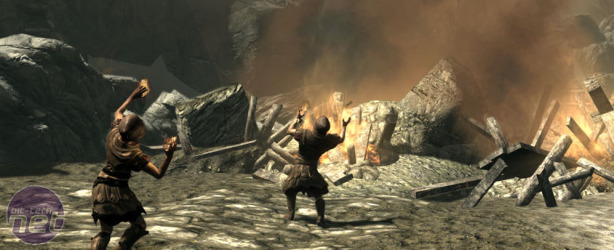
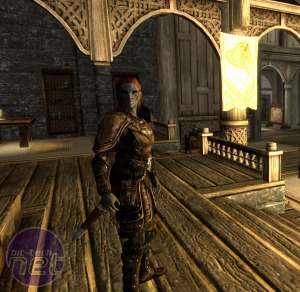
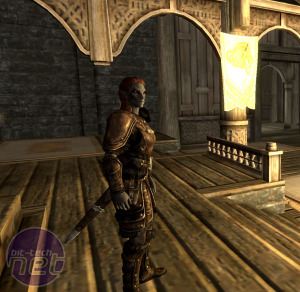
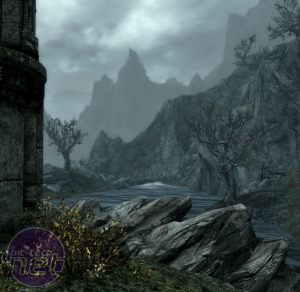
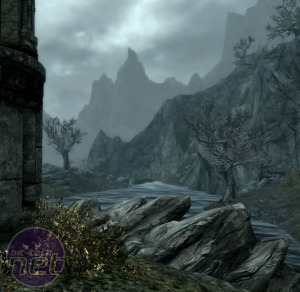








Want to comment? Please log in.